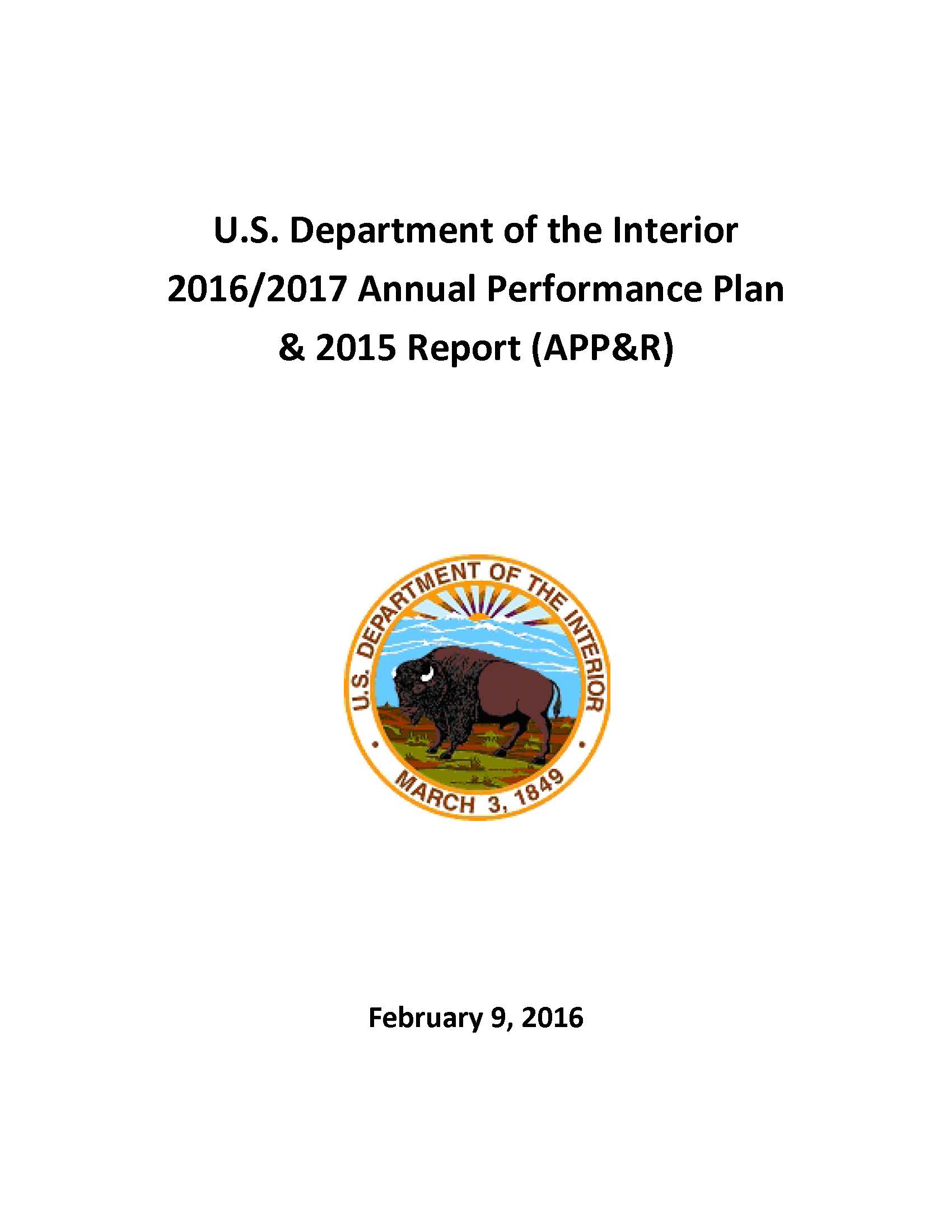Statement:
Renewable energy resource development.
By September 30, 2015, increase approved capacity authorized for renewable (solar, wind, and geothermal) energy resources affecting Department of the Interior managed lands, while ensuring full environmental review, to at least 16,500 Megawatts (since 2009).
Description:
The Obama Administration’s coordinated strategy to develop all appropriate sources of renewable and conventional energy on U.S. public lands calls for development of onshore and offshore renewable energy under a ‘Smart from the Start’ approach that prioritizes and processes existing applications in a coordinated, focused manner with full environmental analysis and public review.
As manager of one-fifth of the nation’s landmass and 1.7 billion acres of the outer continental shelf, the U.S. Department of the Interior has the resources to help America produce more energy at home, thereby supporting a growing economy and job creation and reducing dependence on foreign oil and increasing sustainable practices with reduced greenhouse gas emissions. Secretary Sally Jewell has placed a priority on “Powering Our Future,” emphasizing the responsible development of conventional and renewable resources on our nation’s public lands and waters.
Onshore, the Bureau of Land Management (BLM) has identified 20.6 million acres of public land with wind energy potential in 11 western states, 30 million acres with solar energy potential in six southwestern states, and 111 million acres of public land in western states and Alaska with geothermal resource potential. Offshore, the Bureau of Ocean Energy Management (BOEM) manages the Outer Continental Shelf, 1.7 billion acres of federal-offshore lands with enormous wind-energy potential, and approved in 2011 the construction plan for Cape Wind Energy off the coast of Massachusetts.
In addition to the multiple renewable energy efforts on public lands, the Department of Interior is reducing energy consumption within its own buildings while also self-generating renewable energy at over 1,000 Interior sites nationwide, including locations such as visitor centers, wildlife refuges, recreation centers, and tribal facilities. Developing such renewable energy resources responsibly could help support a growing economy and protect our national interests while reducing our dependence on foreign oil and climate-changing greenhouse gas emissions.
Relationship to agency strategic goals and objectives
As the means for advancing the Administration’s ‘all-of-the-above’ strategy to develop domestic energy resources, realizing one of the Secretary of the Interior’s key priorities in creating a new energy frontier and as reflected in Interior’s Strategic Plan’s mission area to “Powering Our Future and Responsible Use of the Nation’s Resources,” this goal continues to expand upon the efforts started with the initial FY 2010/2011 Priority Goal to, “Increase approved capacity authorized for renewable (solar, wind, and geothermal) energy resources on Department of the Interior managed lands, while ensuring full environmental review, by at least 9,000 megawatts through 2011.” As part of securing America’s energy future, DOI is helping to move our nation toward a clean-energy economy. At Interior, this means changing the way we do business by opening our doors to responsible development of renewable energy on our public lands. This means using a ‘Smart from the Start’ approach that prioritizes and processes existing applications in a coordinated, focused manner with full environmental analysis and public review. Efforts include facilitating environmentally appropriate renewable-energy projects involving solar, wind and waves, geothermal, and hydropower. These resources, developed in the right ways and the right places, will help curb our dependence on foreign oil, reduce our use of fossil fuels and promote new industries and jobs here in America.
Key barriers and challenges
Renewable energy projects, especially solar and wind, are complex. The Department is committed to permitting renewable energy projects on public lands in an environmentally responsible manner. As a result, proposed projects are sometimes rejected or reduced in size and scope to avoid or minimize impacts to tribal and cultural resources, threatened and endangered species and their habitat, or areas near or adjacent to lands designated by Congress, the President, or Secretary for the protection of sensitive viewsheds, resources, and values that could be adversely affected by development. Additionally, renewable energy companies sometimes decide to scale down, modify timelines and develop their projects in phases, or otherwise modify or withdraw projects for reasons unrelated to the permitting process.
By tracking progress on a quarterly basis, Interior is aware of the emerging complex issues and challenges associated with the formulation of renewable energy projects that require time and resources to address—including for example, rerouting and modification of plans to avoid impacts to natural resources like sensitive avian and wildlife species and tribal concerns. Further, while Interior agencies play a critical role in facilitating the siting and permitting of renewable energy projects on public lands, there are other factors that impact a potential project’s progress, including the project proponent’s ability to secure financing and to obtain power purchase agreements with electric utility companies. Technology and transmission constraints, such as an applicant needing to upgrade a transmission line, can also impact the overall schedule.
Stakeholder Engagement
This goal includes a broad number of stakeholders within Interior and externally. It is a continuation of a FY 2012-2013 goal that was developed by BLM in concert with the Assistant Secretary for Land and Minerals Management. Other Federal agencies including DOI, USDA, EPA, NOAA; Interior bureaus including FWS, NPS, USGS; as well as States, local entities, conservation groups, industry and others are engaged to advance the Administration’s ‘all-of-the-above’ strategy to develop domestic energy resources and to achieve one of the Secretary of the Interior’s top priorities for “Powering Our Future.”
Learn More









